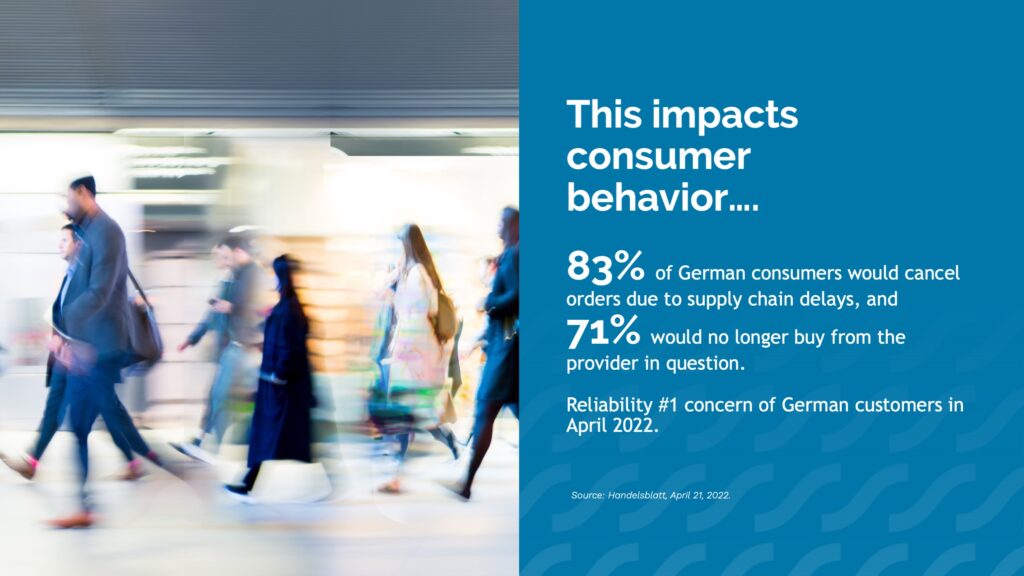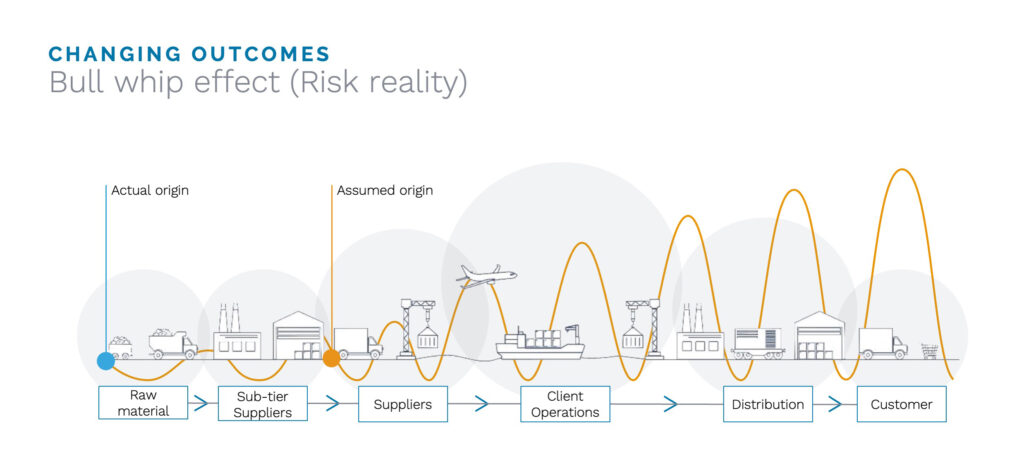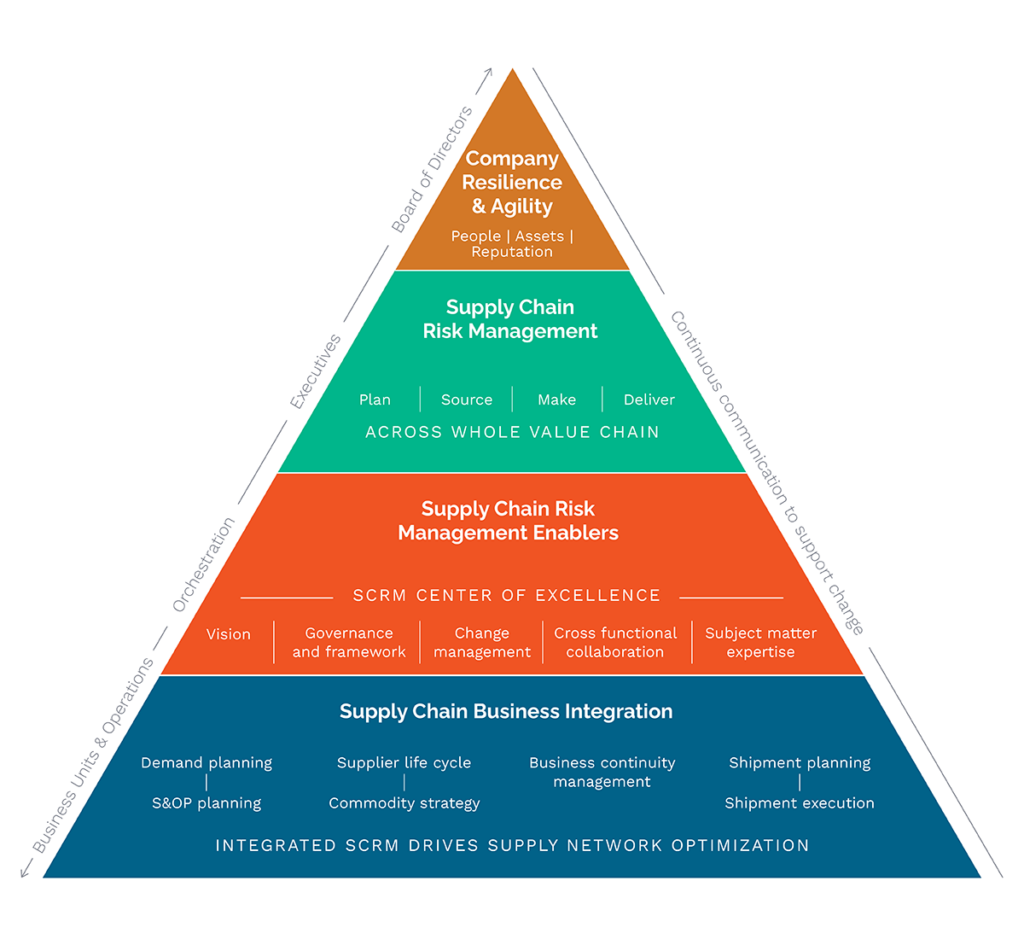It’s the difference between an average company and one that stands out from the rest. Forbes reports that companies that lead in customer experience outperform those who don’t by nearly 80%, and 84% of companies that focus on improving their customer experience report an increase in their revenue.

Figure 1: Companies that lead in consumer experience outperform those that don’t.
With product margins shrinking every day and competition increasing, manufacturing companies are looking to customer service to make up the lost revenue and set them apart. Supply chain predictive analytics is one way for companies to boost their responsiveness to customers, set the right expectations, meet their commitments, and enrich customer relationships.
What is predictive supply chain analytics?
Virtually every industry has been or plans to implement predictive analytics to some capacity. It is estimated that the predictive analytics market will grow from $4.56 billion in 2017 to $12.41 billion in 2022.
Supply chain predictive analytics may best be defined as the ability to use data to predict future supply chain activities. According to MarketsandMarkets, “The major reason for the rising adoption of predictive analytics can be attributed to the need for minimizing the risks and frauds that occur every day.”
The supply chain is fraught with risks, involving many moving parts and roles, each with a critical role in enabling a company to get its product or service to the end customer. Suppliers, manufacturers, and retailers will all come into contact with the product, including companies responsible for delivering essential parts to the manufacturer. With so many touches, a single disruption can instantly send shock waves up and down the supply chain. Service suffers, then customer satisfaction, and finally, the bottom line.

Figure 2: The bullwhip effect shows how supply chain predictive analytics can identify risk early and prevent it from growing.
Customer satisfaction is inextricably linked to how well companies can meet their commitments. Delayed, damaged, or incomplete shipments do not bode well for building customer loyalty. An efficient supply chain requires everyone to do their part. The sooner and more clearly a company can see threats to its ability to deliver as promised, the more time it has to take action to avoid or mitigate that risk.
Supply chain predictive analytics and risk management
An article from the Harvard Business Review recognized the relationship between risk management and customer service. While efficient risk management can reduce waste, supply chain duplication, and costs, increasingly more companies recognize its power to impact customer satisfaction. A hiccup on the service side of the business has a similar effect on the company as a production disruption from any of the supply chain stakeholders.
To minimize risks, shippers and brokers need to know their risks before they ship. Companies, therefore, often invest time and dollars into supply chain risk management (SCRM) strategies.
One of the first steps to risk management is to understand the potential risks and where they may occur, then to predict their plausibility at any given time. Some of these risks are easily understood, perhaps because they’ve happened in the past and lessons have been learned. Of course, many risks are difficult to predict, such as political instability, natural disasters, and terrorist attacks. While these may be more extreme than common supply chain risks like infrastructure outages, the financial condition of suppliers, and labor risks, they all work together to threaten on time delivery.

Figure 3: Key SCRM strategies all incorporate supply chain predictive analytics.
And, it’s that On Time, In Full delivery that drives customer satisfaction. Customers aren’t as concerned as to why there is a delay with the parts they need or the product they ordered. They partner with your business because they trust you will deliver what they need when they need it. If your carrier is to blame for the delay, you can bet the carrier won’t be hearing from the customer. Your phone is the one that will ring, and you or someone on your team will need to explain why your company wasn’t able to meet its commitment.
According to Supply Chain Dive, “Disaster can strike at any stage or level of the supply chain, so responsibility extends to logistics and procurement professionals. It takes a village to ensure supply chain resilience.”
With every link of the supply chain facing similar and unique risk profiles, it’s easy to see how challenging it can be for stakeholders to hold up their end of the deal for a product to make it out the door on time. It’s a rather remarkable feat of industry to manufacture and deliver anything, if you think about it.
Supply chain predictive analytics and logistics
Risk assessments are, of course, a fundamental exercise in any manufacturing organization. Part of that practice is to predict what may happen at every stage. One of the most critical links in any supply chain is logistics. No product can be manufactured or delivered without parts coming from somewhere else.
Parts most likely travel from supplier to manufacturer, who must then ship their products somewhere else, sometimes to another manufacturer. The chain continues until the final end user receives their expected product.
With logistics front and center, companies are using supply chain predictive analytics to ensure those parts and products have the best chance of making it to their desired locations on time and in their expected condition. As a critical link in the supply chain, logistics leaders require as much relevant data as they can get their hands on. Simply checking a few weather reports and choosing the standard mode of transportation is no longer sufficient.
Today’s supply chain predictive analytics use sophisticated technology that improves the accuracy and speed of logistics predictions so leaders can make data-driven decisions with greater confidence. Unlike manual reporting, supply chain predictive analytics combines different types of data from various sources. It leverages big data and “little” data to paint a comprehensive picture of what may happen up to 10 days before tender.
The difference between big data and little data is that big data include the massive datasets, fast-moving analytics, and complex data sources. Little data, on the other hand, are traditional performance metrics, like KPIs. When you combine the two, you get context as to how external forces can impact your company’s performance.
For instance, your company needs big data to develop your logistics strategy based on all of the possible routes and lanes, transportation modes, and general risks between pickup and delivery. This type of data may be basically the same for any company dealing with logistics. But without the small data, the data that pertains specifically to your organization, that data has little meaning. Only when big data is combined with little data, such as your OTIF commitments, revenue, profit margin, customer satisfaction, and market share, can you know if your logistics strategies have worked.
What predictive supply chain analytics detects
Depending on your focus, supply chain predictive analytics sheds light on what could happen given certain conditions. For logistics, predictive analytics is great at analyzing the probability and possible effects of the following:
Inclement weather
It doesn’t always take a massive storm to slow shipments. Sometimes, it’s much simpler, such as black ice, high winds, or even dust storms. These and many other weather events can happen anywhere along the intended lane. It would take a person hours, if not days, to collate all of the weather forecasts across the entire shipment route. The software, however, can amass this data on an hourly basis for 7-10 days out and then provide an analysis of its timing. It can even map the risks on a map by lane, by market, or a single plant.
Extreme temperatures
Extreme temperatures may not impact the lane, but they can affect the quality of the products being shipped. Many products need to be kept at a constant temperature and any temperature fluctuations can render the products useless or even harmful. When companies know the temperature ranges for every leg of the shipment journey, they can not only protect the freight, but they can make informed decisions. Quickly, leaders can determine which mode of transportation is best, if a refrigerated truck is necessary or if another lane would be less risky, for instance.
Social hazards
While relatively rare, social hazards do exist. These can come in the form of criminal activity, protests, political rallies, and even parades. We’re seeing more of these pop up in recent months, and they’re catching many companies off guard. Tracking these occurrences over the past 20 years, the most common social hazards are:
- Economic and social injustice
- Sports and event-related riots
- Politically-motivated civil unrest
- Reaction to police actions
These hazards can emerge rapidly without much warning. Without a mechanism to predict such events, companies can only react after they’ve begun. It is important for shippers and brokers to be able to plan the logistics around these events to avoid delays or damage to the cargo. Predictive analytics sources information from multiple authorities, giving shippers and brokers valuable data on when these events are most likely to occur and where, and how best to avoid such situations.
Natural disaster impact zones
Hurricanes, tornadoes, floods, landslides, and even wildfires can wreak havoc on shipping lanes. They may announce their arrival weeks ahead, or they may surprise impact zones and interrupt the normal flow of business in those impact zones for weeks. Using supply chain predictive analytics, however, companies can work these disasters into their risk analysis and logistics planning many days ahead.
Infrastructure outages
Infrastructure outages are one of the more common risk factors in logistics. A bridge may be under construction or a highway may be down to one lane for miles, for instance. Sending a shipment along affected lanes can mean unplanned delays and damage to the cargo, both impacting customer satisfaction. Using predictive analytics, however, companies can instantly and clearly see the location of each risk and an indication of how likely that risk will impact the shipment on each day, even by the hour. Decision-makers can determine if it’s worth adjusting the timing of the shipment, mapping out a new lane or choosing an alternate mode of transportation.
Supply chain predictive analytics and decision-making
The data that new supply chain predictive analytics can detect and analyze is a powerful tool for decision-makers. It can paint a visual picture of all of the potential risks and the probability of each risk at any point of the route so stakeholders can come to an agreement on how to minimize interruptions, costs, and delays.
Instead of guesses and assumptions, decision-makers have real, accurate, reliable data that can be viewed in real-time or as much as 10 days out. Supply chain predictive analytics help answer the why, when, and how. No more surprises. No more dissatisfied customers. Even when the risks cannot be avoided, companies are better able to keep their customers informed with actual data to set expectations and deliver good customer service.
Get our ebook to learn how predictive analytics can find and rate business risks.